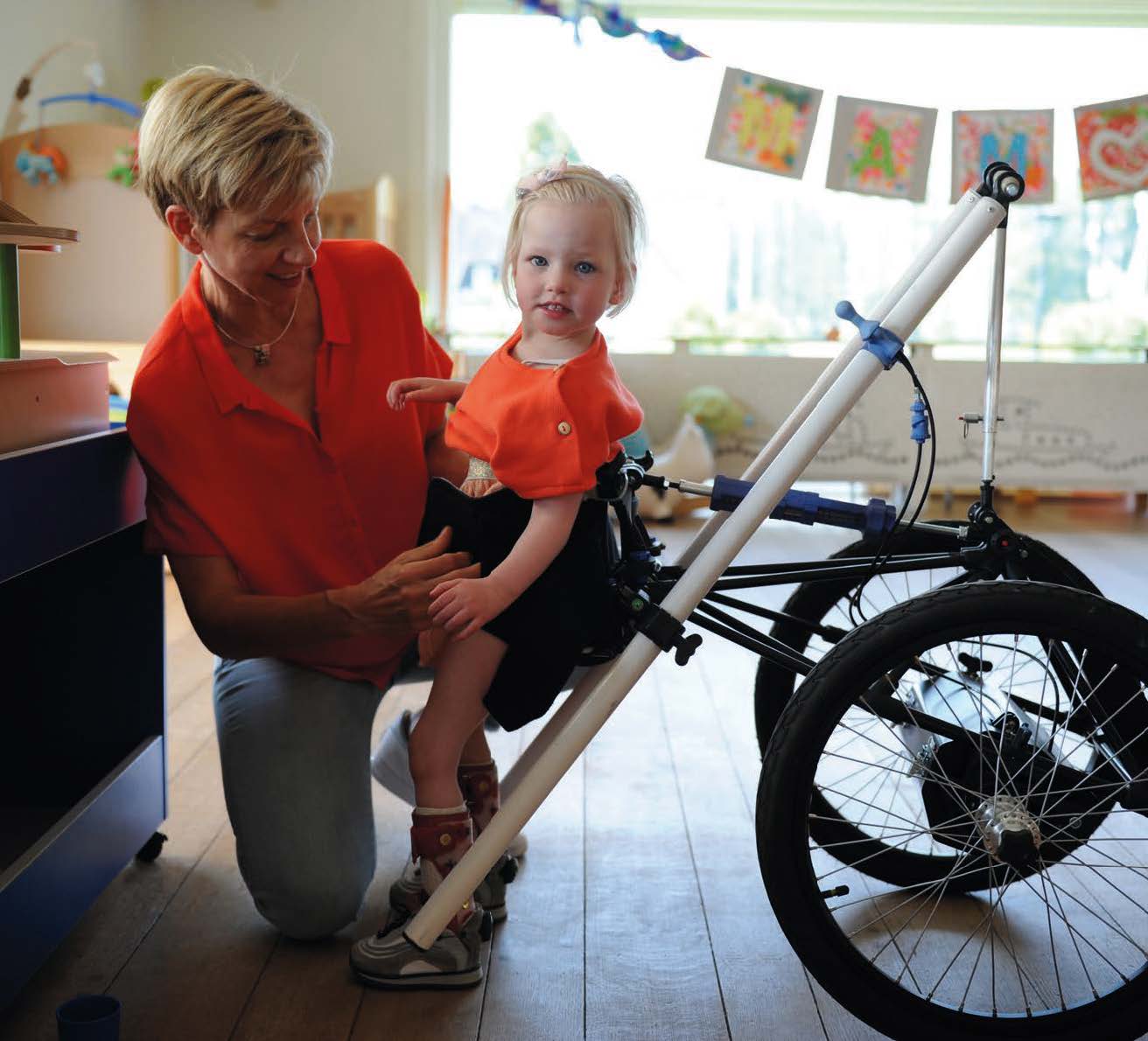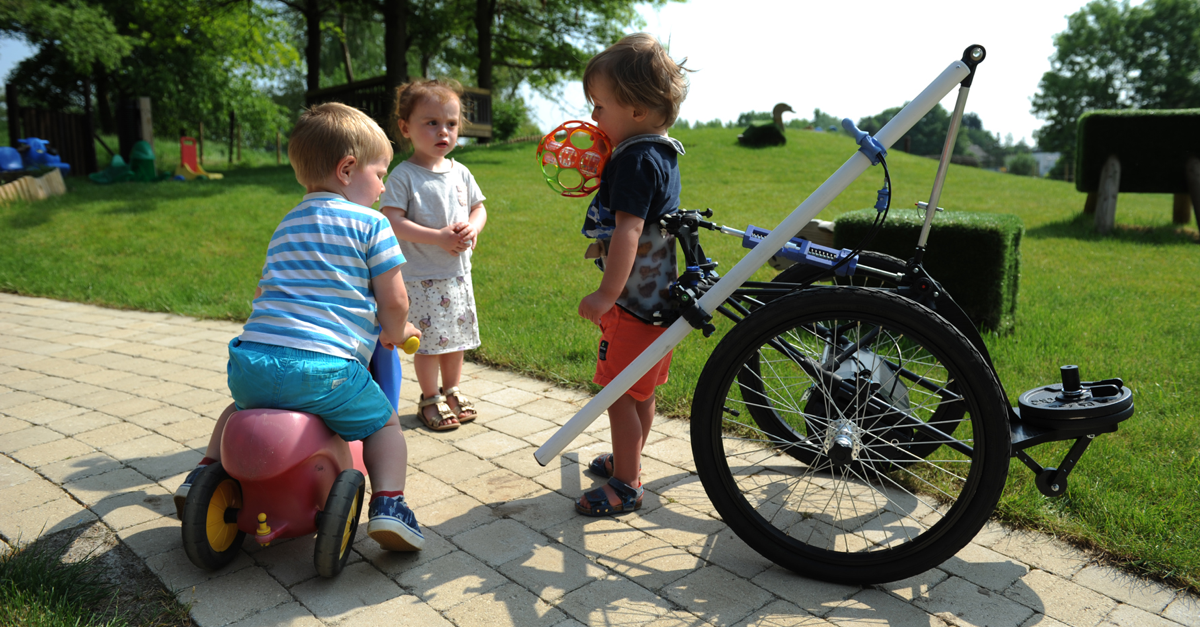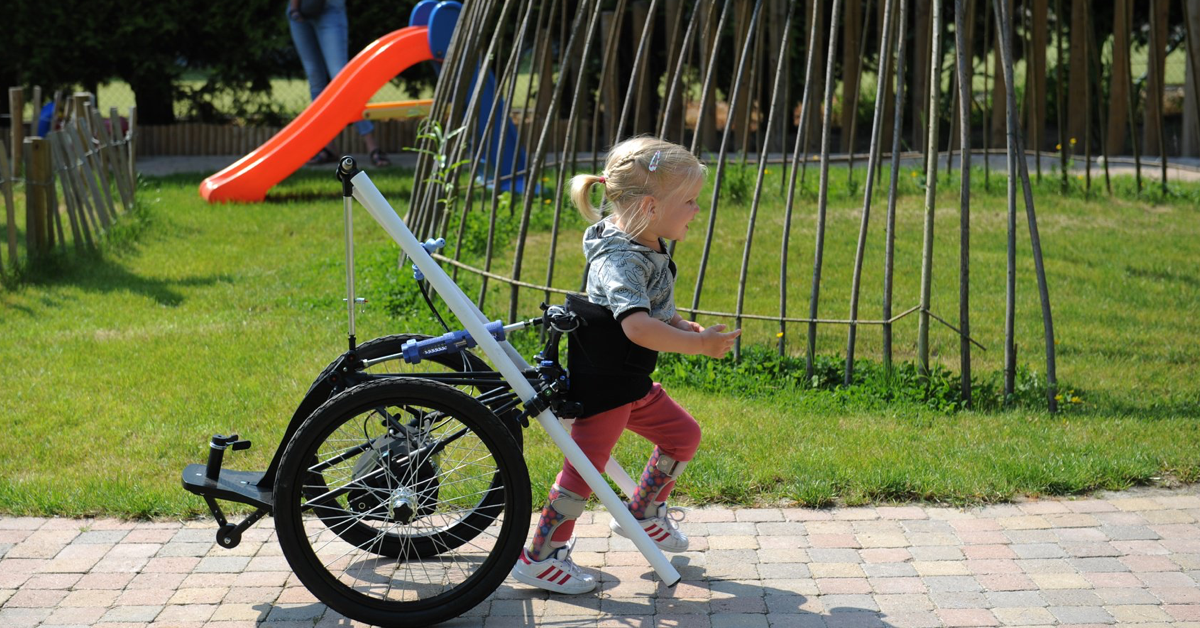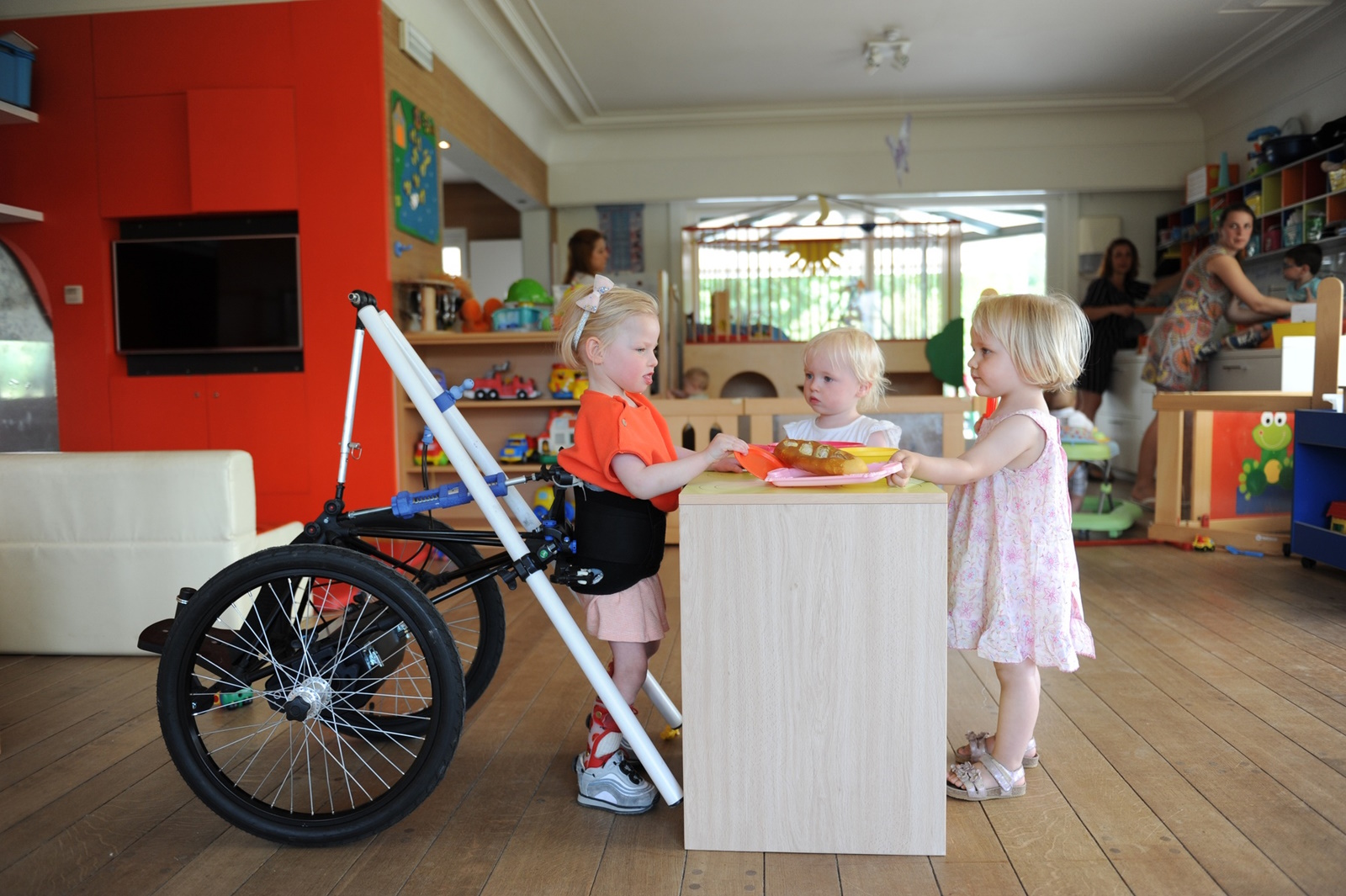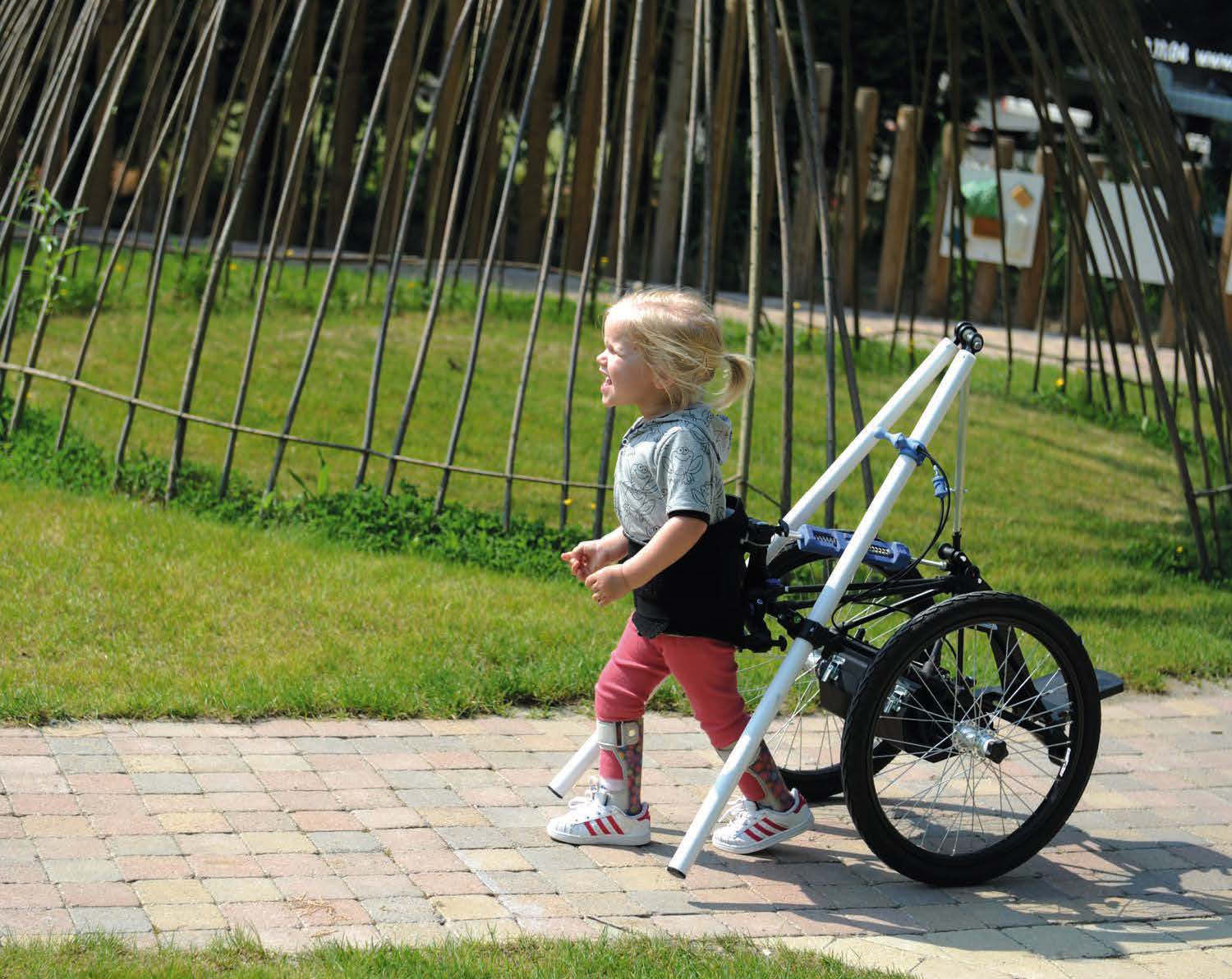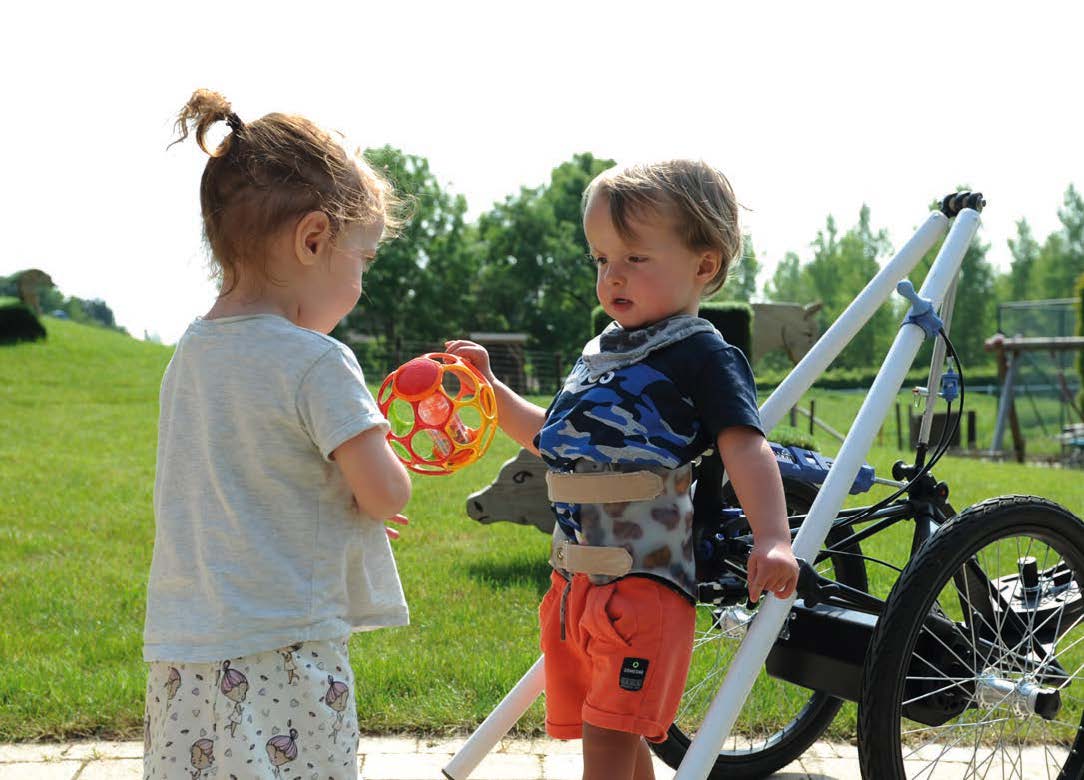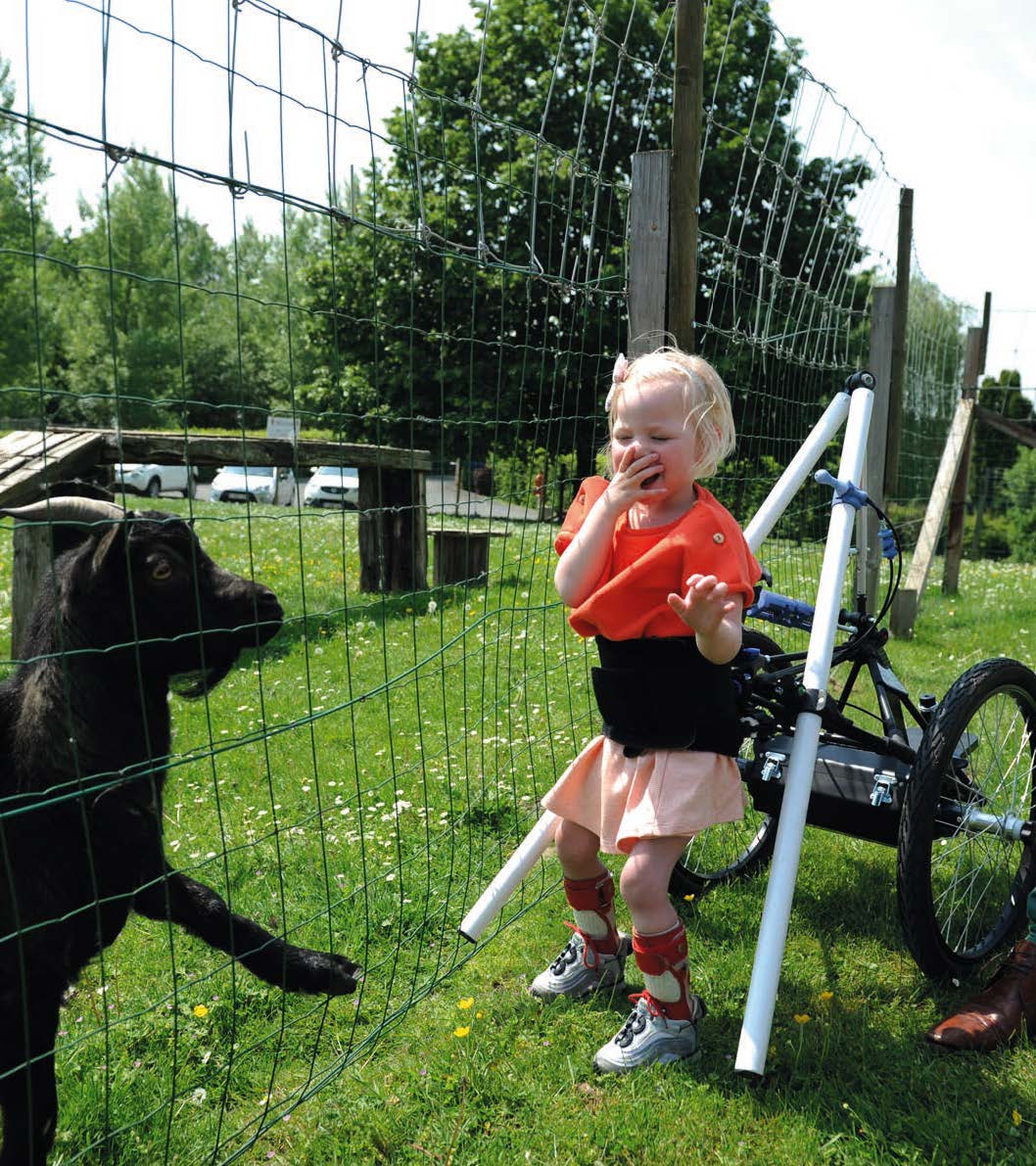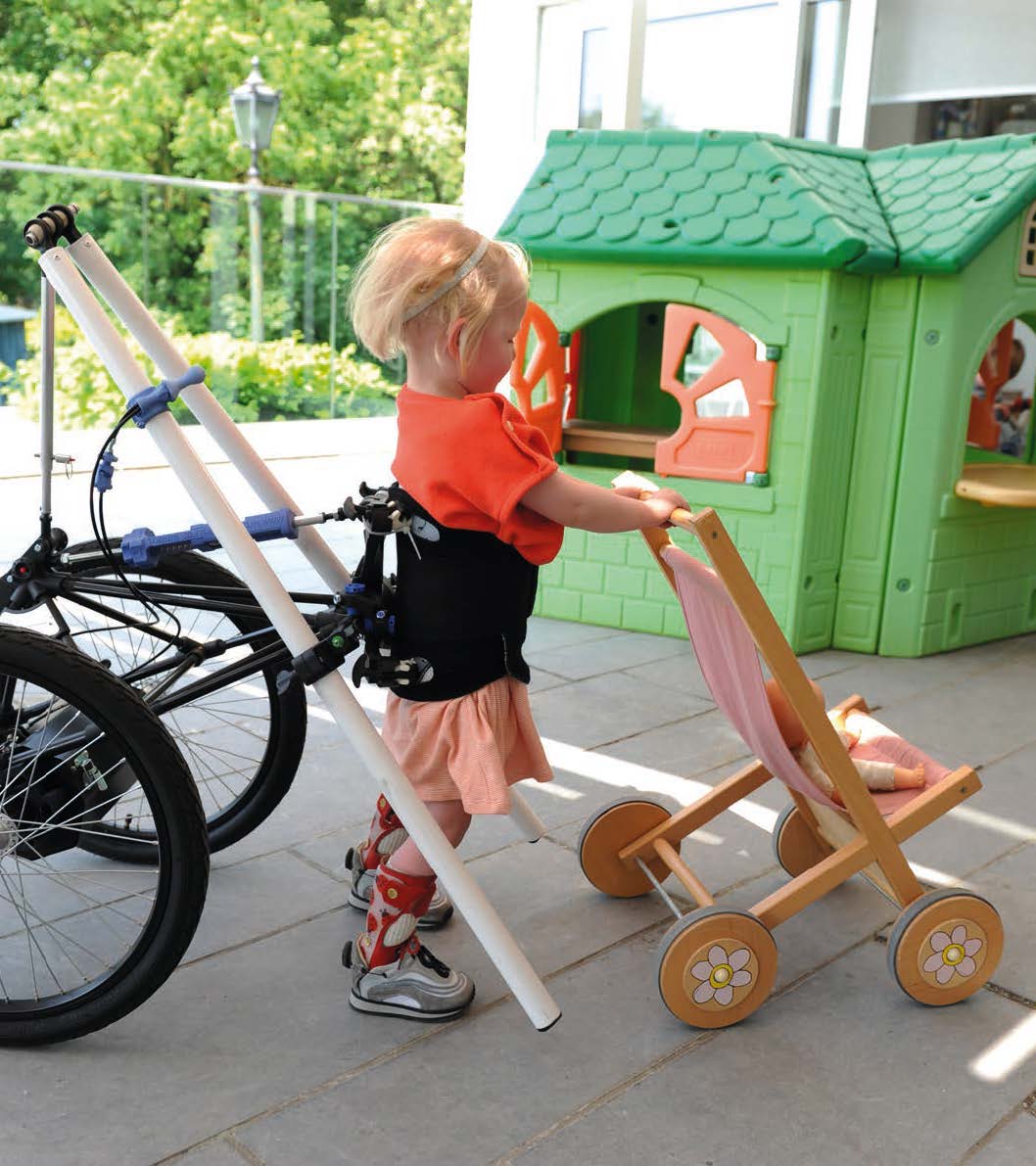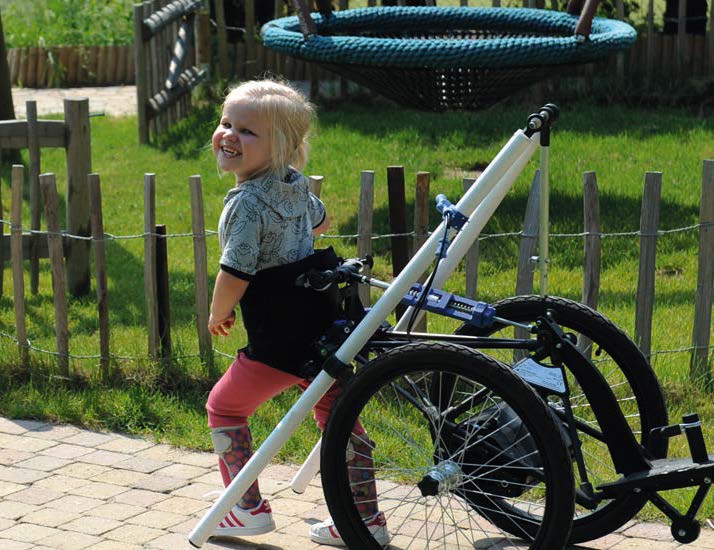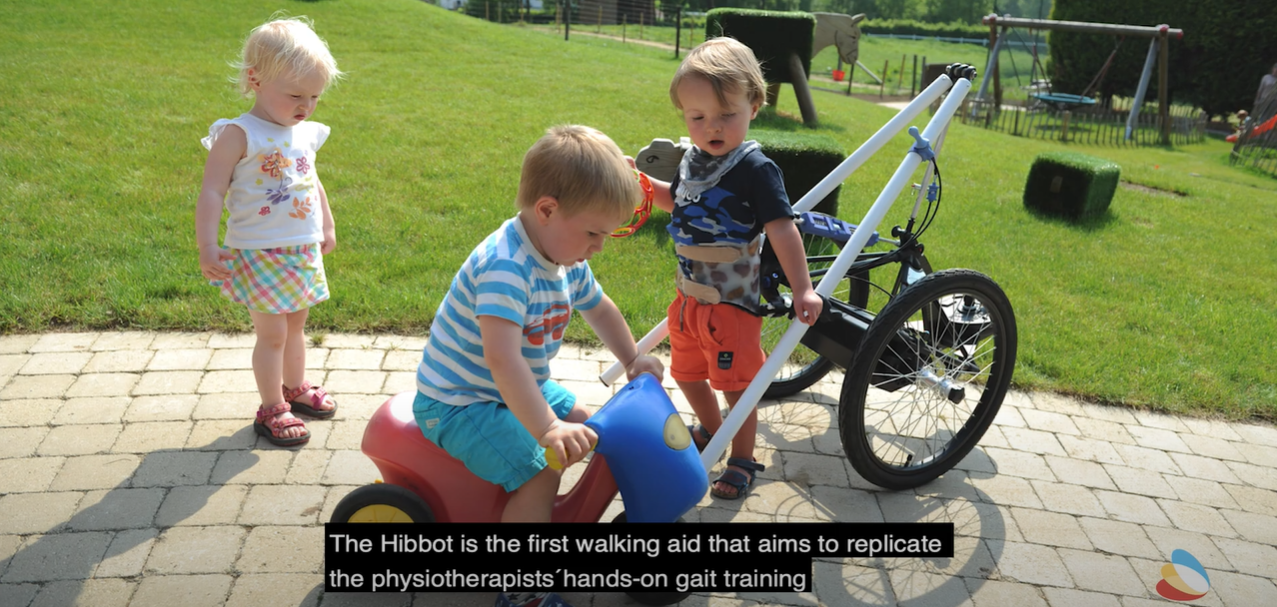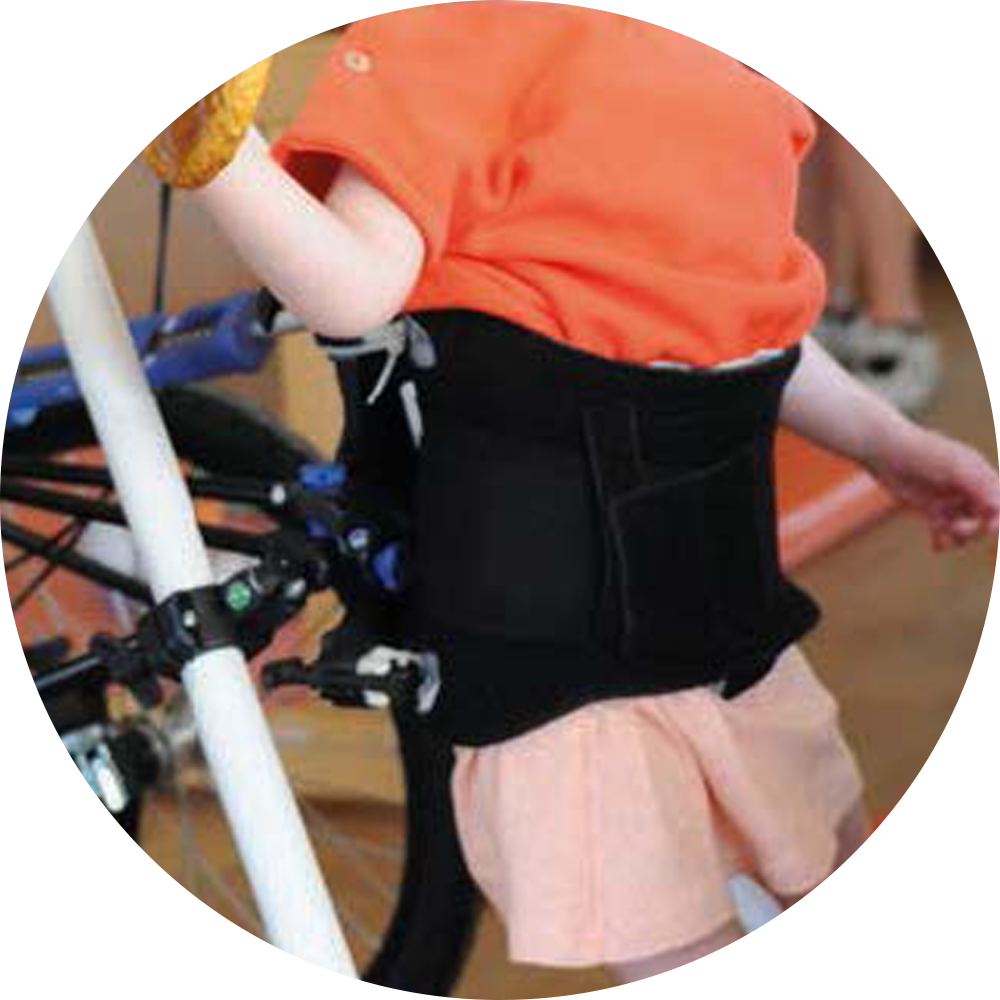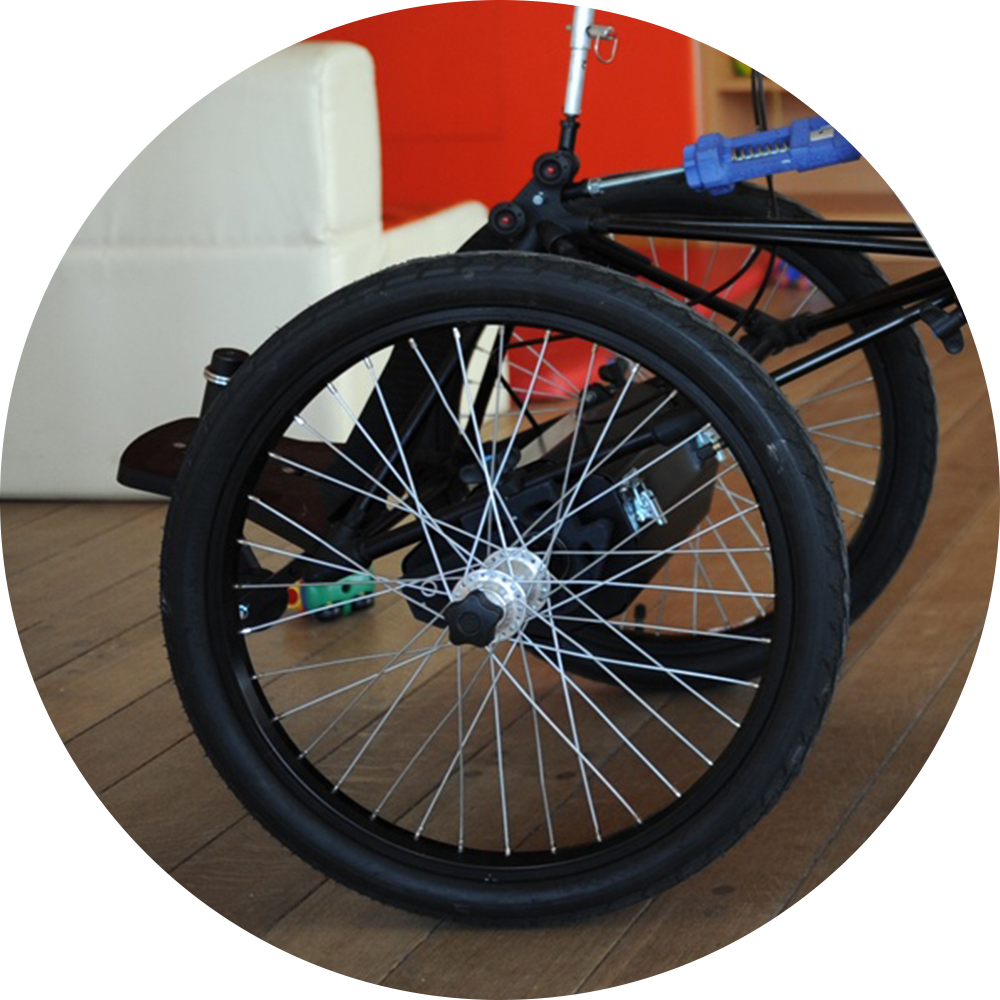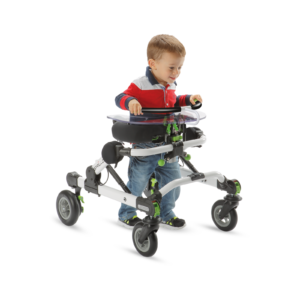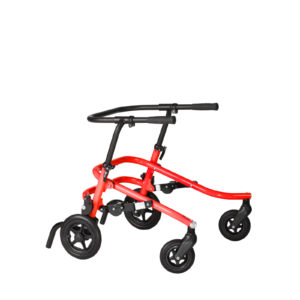Innovative walking device
The Hibbot is an innovative, individual walking device which allows children with functional movement disorders to walk.
Although the Hibbot seems straightforward from the look of it, it’s a comprehensive and smart device with state-of-the-art technology built into it. Human hands have always been a challenge to replicate in the robotics field, however, the Hibbot replicates all the hand movements a physiotherapist usually uses when supporting a child while walking. The Hibbot support is adjustable and smart enough to give the child just the support it needs to progress. This makes the Hibbot unique whilst remaining user-friendly.
The Hibbot has a pelvis support (brace) replicating the hands of the therapist to be able to stand. There is no need to hold on to the device with the hands like on a conventional walker – hands free walking. The Hibbot challenges the child to move away from a flexed position and instead work on strengthening extensor muscles and finding balance. Small adjustments on the Hibbot makes it possible to adapt amount of support needed to either give more support or to reduce the support due to progression of the child’s motor function.
Who can benefit from using the Hibbot?
Children who can learn to walk either independently or using a handhold walking aid. It can be children with cerebral palsy GMFCS level II-III or other neurological disorders with mobility level corresponding to the GMFCS level II-III. The child should have no structural deformities and show signs of motivation to stand and walk.
What is the recommended age to start using the Hibbot?
The Hibbot is a dynamic walking aid that facilitates participation in everyday activities. It is recommended to start stimulating standing from as early as 11-13 months of age. At this age this is a common developmental phenomenon for most children to begin practicing standing. The Hibbot aims to replicate the physiotherapists’ hands on the pelvis and provide just enough support for the individual child to be able to stand up in a more functional and upright alignment. The device encourages activity in extensor muscles and promotes postural alignment and balance. This is a prerequisite to achieve optimal functional movement. When the child has gained enough strength to stand on their own with enough practice with extension over their hips, they then begin to learn how to walk in the device.
What type of activities can I do to facilitate my child’s experience when using the Hibbot?
We have created a guide for both physiotherapists and parents with a verity of ideas on how to use the Hibbot. Suggestions to focus on the improvement of balance and strength. You can download it here.
My child likes to explore. Can the Hibbot be used outside?
Yes, it is approved for outdoor use. Although, it should only be used on even surface and under supervision of a responsible adult.
What level of follow up/service is needed for the Hibbot?
Our highly-skilled assistive device consultants; coach individuals, advise and motivate users, caregivers and therapists. During the first trial our consultant adapt the device to the child’s specific needs. We then teach and facilitate the lead therapist prescribing the device how to make small adjustments regularly. This will ensure the device is correctly adjusted to factor growth and progression of the child’s motor function. The Hibbot is a personal walking aid and should only be used by the child it’s adapted for.
Which parts on the Hibbot must be changed to let the child grow with the device?
The Hibbot is delivered as a complete device to fit the child’s size at delivery time. The brace and wheels will be the only parts that will require replacing in relation to the child’s growth. These parts can be ordered from Medifab or through our network of distributors.
Can my child fall over in the Hibbot?
The Hibbot consist of two fall protections “arms”. The fall protection-support is adjusted to be just 5-10 cm above the floor. In case the child loose balance either forward or to the side the fall protection-support will go into the ground and protect the child from falling over. In addition, the Hibbot has a compass that is turned ON or OFF to control lateral sway. By lateral sway the Hibbot will turn back into centre and the child will walk straight forward. The fall protection-support and the compass make it possible for the child to work safely on its balance in the Hibbot.
Is it possible to reduce the size of the Hibbot for transport?
The Hibbot can easily be dismantled for transport. In the user manual it is described how to remove and assemble the fall-prevention and wheels. The frame, fall-support and the brace can be transported in a bag together and the wheels separately.
What period of time can the child use the Hibbot?
The Hibbot is growing with the child by replacing the brace and wheels. The limit is a weight of 30 kg and height of 125 cm. The period the child will use depends on its initial level of functioning. More involved children need the Hibbot for many years. It is advised to start as early as possible to make the child as active as possible in the right way. Intensity, repetition, specificity of training (are important factors in the motor learning process of standing and walking. The growing ability of the device makes it a smart investment that can be used for many years if necessary and started at a young age.






